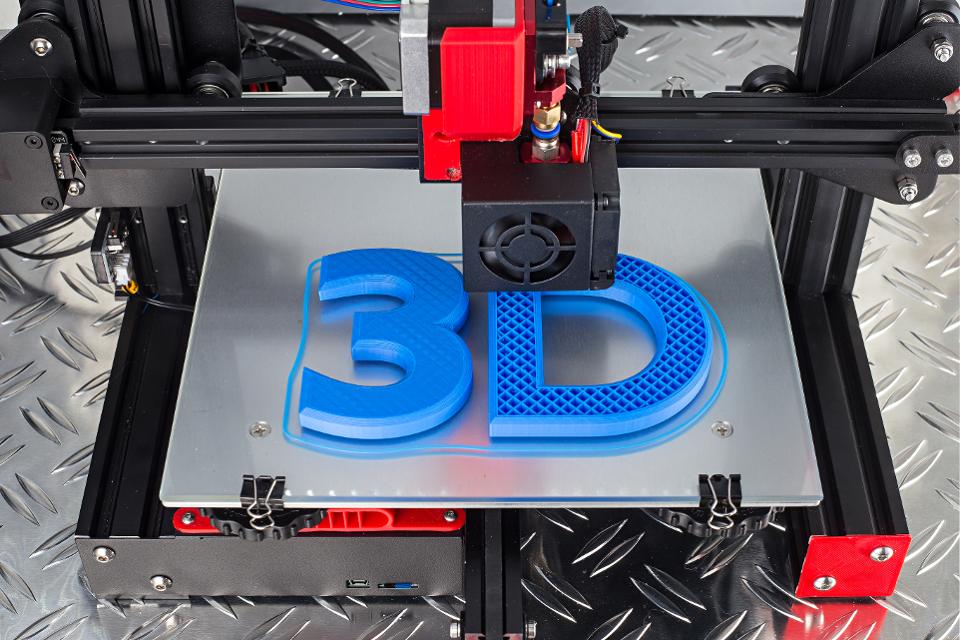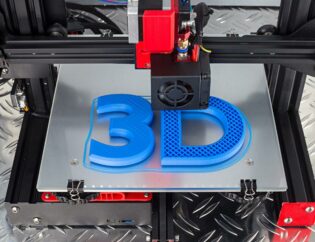
In recent years, the convergence of wearable technology and 3D printing has revolutionized the consumer wearables market. This synergy has led to innovative products that are not only functional but also customizable and aesthetically appealing. In this comprehensive blog, we will explore ten remarkable examples of 3D printing online in consumer wearables, highlighting how this technology is shaping the future of personal gadgets.
-
Custom-Fit Earbuds
One of the most popular applications of 3D printing in consumer wearables is the production of custom-fit earbuds. Companies like Normal and Ultimate Ears use 3D scanning and printing technologies to create earbuds that perfectly fit the unique contours of a user's ears. This ensures a comfortable fit, superior sound quality, and effective noise isolation.
By using 3D printing services in India, these companies can quickly produce earbuds tailored to individual users, eliminating the need for mass production and reducing waste. Additionally, the customization process allows for a wide range of design options, enabling users to choose colors and patterns that match their personal style.
Benefits of Custom-Fit Earbuds
Custom-fit earbuds offer several benefits over traditional, mass-produced earbuds. Firstly, the personalized fit ensures maximum comfort, allowing users to wear the earbuds for extended periods without discomfort. This is particularly important for individuals who use earbuds for activities such as exercise or travel.
Secondly, the custom fit provides superior sound quality and noise isolation. By creating a seal within the ear canal, custom-fit earbuds can block out external noise, allowing users to enjoy their music or podcasts without distractions. This also means that users can listen at lower volumes, reducing the risk of hearing damage.
Finally, the customization process allows users to choose from a wide range of design options, including colors, patterns, and materials. This means that users can create a pair of earbuds that reflect their personal style and preferences.
2. Smartwatches with Customizable Bands
Smartwatches have become a staple in the wearable technology market, offering features such as fitness tracking, notifications, and even mobile payments. 3D printing service in India has enabled the creation of customizable smartwatch bands that cater to individual preferences and needs.
For example, Apple and Samsung have embraced 3D printing to produce bands in various materials, colors, and designs. Users can choose from a range of options, including flexible silicone, durable nylon, and even metal bands with intricate patterns. This level of customization enhances the user experience and allows for a more personalized look.
Customization Options for Smartwatch Bands
One of the key advantages of 3D printing smartwatch bands is the ability to customize the design to suit individual preferences. Users can choose from a wide range of colors, patterns, and materials, allowing them to create a band that reflects their personal style.
In addition to aesthetic customization, 3D printing in Bangalore also allows for the incorporation of advanced features into the bands. For example, some bands may include built-in sensors for monitoring heart rate or other biometric data. Others may feature antimicrobial coatings to reduce the risk of skin irritation or infection.
Overall, the use of 3D printing in smartwatch bands provides users with a high level of customization and functionality, enhancing the overall user experience.
3. Orthopedic Insoles
Orthopedic insoles are another area where 3D printing has made significant strides. Companies like Wiivv and SOLS use 3D scanning and printing to create custom insoles that provide optimal support and comfort for users. These insoles are designed to address specific foot conditions, such as plantar fasciitis, flat feet, and high arches.
Benefits of Custom Orthopedic Insoles
Custom orthopedic insoles offer several benefits over traditional, mass-produced insoles. Firstly, the personalized fit ensures maximum comfort and support, reducing the risk of foot pain and injury. This is particularly important for individuals with specific foot conditions, such as plantar fasciitis or flat feet.
Secondly, the custom fit provides targeted support, addressing the specific needs of the user's feet. This means that the insoles can help to correct alignment issues, reduce pressure points, and improve overall foot function. This can lead to improved posture, reduced pain, and enhanced performance in activities such as walking, running, and sports.
Finally, the customization process allows users to choose from a wide range of design options, including colors, patterns, and materials. This means that users can create a pair of insoles that reflect their personal style and preferences.
4. Smart Glasses
Smart glasses, such as Google Glass and Vuzix Blade, have gained popularity for their ability to provide augmented reality (AR) experiences and hands-free access to information. 3D printing in India has played a crucial role in the development and production of these devices, enabling the creation of lightweight and ergonomic frames.
Customization Options for Smart Glasses
One of the key advantages of 3D printing smart glasses is the ability to customize the design to suit individual preferences. Users can choose from a wide range of colors, patterns, and materials, allowing them to create a pair of glasses that reflect their personal style.
In addition to aesthetic customization, 3D printing service in Bangalore also allows for the incorporation of advanced features into the frames. For example, some smart glasses may include built-in sensors for monitoring biometric data, such as heart rate or eye movement. Others may feature augmented reality displays that provide real-time information and navigation.
Overall, the use of 3D printing in smart glasses provides users with a high level of customization and functionality, enhancing the overall user experience.
5. Fitness Trackers
Fitness trackers, like those produced by Fitbit and Garmin, are essential tools for monitoring physical activity, heart rate, and sleep patterns. 3D printing services in Bangalore have enabled the creation of customizable and durable bands for these devices, allowing users to personalize their fitness trackers to match their style and preferences.
Customization Options for Fitness Tracker Bands
One of the key advantages of 3D printing fitness tracker bands is the ability to customize the design to suit individual preferences. Users can choose from a wide range of colors, patterns, and materials, allowing them to create a band that reflects their personal style.
In addition to aesthetic customization, 3D printing also allows for the incorporation of advanced features into the bands. For example, some bands may include built-in sensors for monitoring heart rate or other biometric data. Others may feature antimicrobial coatings to reduce the risk of skin irritation or infection.
Overall, the use of 3D printing in fitness tracker bands provides users with a high level of customization and functionality, enhancing the overall user experience.
6. Prosthetic Limbs
Prosthetic limbs are one of the most impactful applications of 3D printing in the wearable technology space. Companies like Open Bionics and Unlimited Tomorrow use 3D printing to create affordable and customizable prosthetic limbs for individuals with limb loss.
Benefits of Custom Prosthetic Limbs
Custom prosthetic limbs offer several benefits over traditional, mass-produced prosthetics. Firstly, the personalized fit ensures maximum comfort and functionality, allowing users to perform everyday activities with ease. This is particularly important for individuals with limb loss, as a well-fitting prosthetic can significantly improve their quality of life.
Secondly, the custom fit provides optimal support and alignment, reducing the risk of discomfort and injury. This means that the prosthetic can help to correct alignment issues, reduce pressure points, and improve overall limb function. This can lead to improved posture, reduced pain, and enhanced performance in activities such as walking, running, and sports.
Finally, the customization process allows users to choose from a wide range of design options, including colors, patterns, and materials. This means that users can create a prosthetic that reflects their personal style and preferences.
https://www.youtube.com/watch?v=SIWfzC266Hs
7. Smart Clothing
Smart clothing, also known as e-textiles, integrates electronic components into fabrics to provide advanced functionalities, such as temperature regulation, biometric monitoring, and even haptic feedback. 3D printing has enabled the creation of smart clothing with intricate designs and customizable features.
Customization Options for Smart Clothing
One of the key advantages of 3D printing smart clothing is the ability to customize the design to suit individual preferences. Users can choose from a wide range of colors, patterns, and materials, allowing them to create a garment that reflects their personal style.
In addition to aesthetic customization, 3D printing also allows for the incorporation of advanced features into the fabric. For example, some smart clothing may include built-in sensors for monitoring biometric data, such as heart rate or respiration. Others may feature haptic feedback systems that provide real-time feedback and alerts.
Overall, the use of online 3D printing in smart clothing provides users with a high level of customization and functionality, enhancing the overall user experience.
8. Customizable Jewelry
3D printing chennai has revolutionized the jewelry industry by enabling the creation of intricate and customizable pieces. Companies like Shapeways and i.materialise offer 3D printing services that allow users to design and produce unique jewelry items, such as rings, bracelets, and necklaces.
Our manufacturing experience can help you make decisions faster.
Choose one to get started
Customization Options for Jewelry
One of the key advantages of 3D printing jewelry is the ability to customize the design to suit individual preferences. Users can choose from a wide range of colors, patterns, and materials, allowing them to create a piece that reflects their personal style.
In addition to aesthetic customization, 3D printing online also allows for the incorporation of advanced features into the jewelry. For example, some pieces may include built-in sensors for monitoring biometric data, such as heart rate or temperature. Others may feature intricate patterns and designs that provide a unique and personalized look.
Overall, the use of 3D printing in customizable jewelry provides users with a high level of customization and functionality, enhancing the overall user experience.
9. Hearing Aids
Hearing aids are essential devices for individuals with hearing loss, and 3D printing has significantly improved their design and functionality. Companies like Phonak and Widex use 3D printing to create custom-fit hearing aids that provide optimal comfort and performance.
Benefits of Custom Hearing Aids
Custom hearing aids offer several benefits over traditional, mass-produced hearing aids. Firstly, the personalized fit ensures maximum comfort and performance, allowing users to wear the hearing aids for extended periods without discomfort. This is particularly important for individuals with hearing loss, as a well-fitting hearing aid can significantly improve their quality of life.
Secondly, the custom fit provides effective sound amplification, addressing the specific needs of the user's hearing. This means that the hearing aid can help to correct hearing loss, improve speech clarity, and reduce background noise. This can lead to improved communication, reduced listening effort, and enhanced overall hearing experience.
Finally, the customization process allows users to choose from a wide range of design options, including colors, patterns, and materials. This means that users can create a hearing aid that reflects their personal style and preferences.
10. Smart Helmets
Smart helmets, such as those produced by Skully and Livall, integrate advanced technologies, such as augmented reality (AR) displays, GPS navigation, and communication systems, into traditional helmet designs. 3D printing has enabled the creation of lightweight and ergonomic smart helmets that provide enhanced safety and functionality.
Customization Options for Smart Helmets
One of the key advantages of 3D printing smart helmets is the ability to customize the design to suit individual preferences. Users can choose from a wide range of colors, patterns, and materials, allowing them to create a helmet that reflects their personal style.
In addition to aesthetic customization, 3D printing also allows for the incorporation of advanced features into the helmet. For example, some smart helmets may include built-in sensors for monitoring biometric data, such as heart rate or temperature. Others may feature augmented reality displays that provide real-time information and navigation.
Overall, the use of 3D printing in smart helmets provides users with a high level of customization and functionality, enhancing the overall user experience.


